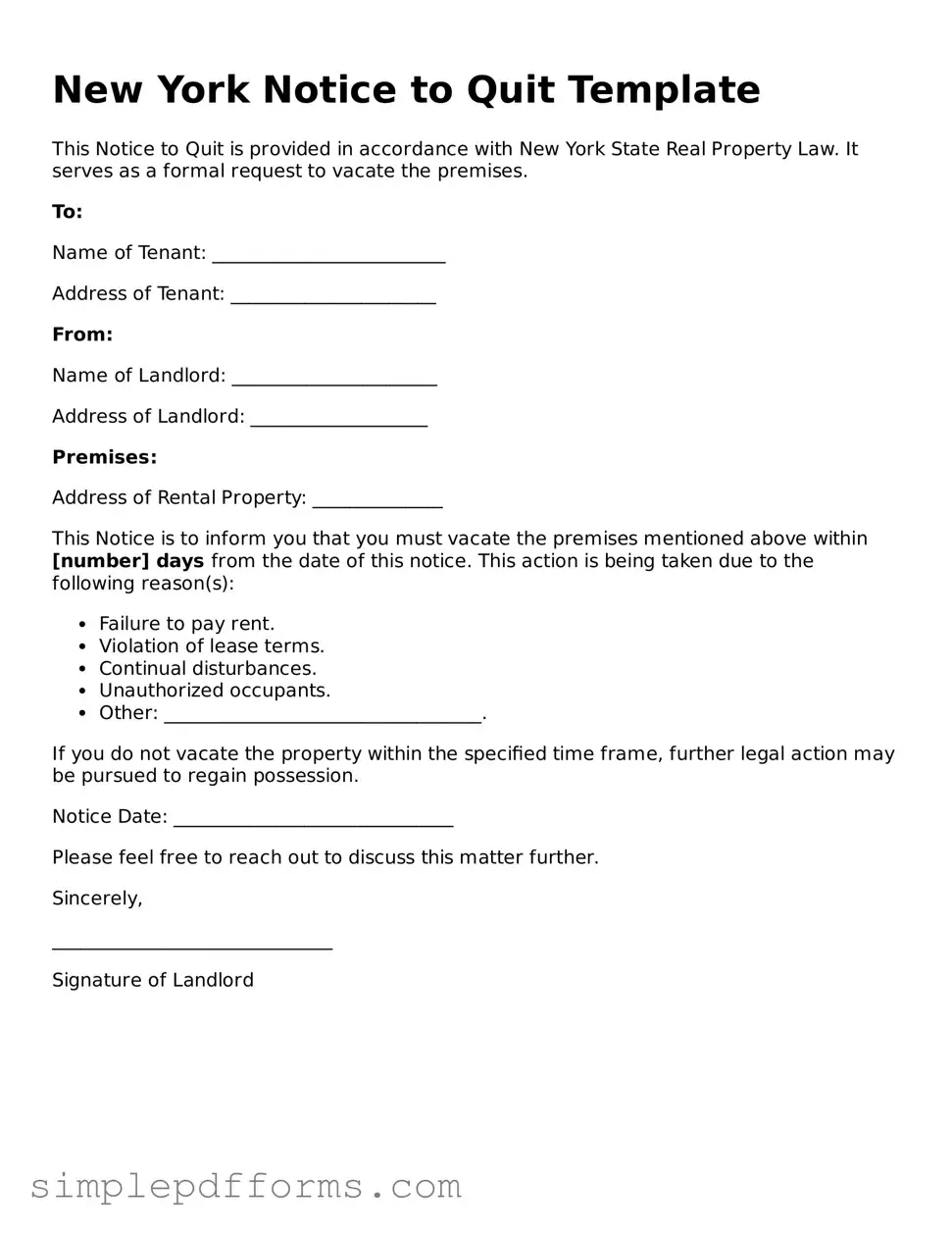New York Notice to Quit Template
This Notice to Quit is provided in accordance with New York State Real Property Law. It serves as a formal request to vacate the premises.
To:
Name of Tenant: _________________________
Address of Tenant: ______________________
From:
Name of Landlord: ______________________
Address of Landlord: ___________________
Premises:
Address of Rental Property: ______________
This Notice is to inform you that you must vacate the premises mentioned above within [number] days from the date of this notice. This action is being taken due to the following reason(s):
- Failure to pay rent.
- Violation of lease terms.
- Continual disturbances.
- Unauthorized occupants.
- Other: __________________________________.
If you do not vacate the property within the specified time frame, further legal action may be pursued to regain possession.
Notice Date: ______________________________
Please feel free to reach out to discuss this matter further.
Sincerely,
______________________________
Signature of Landlord
